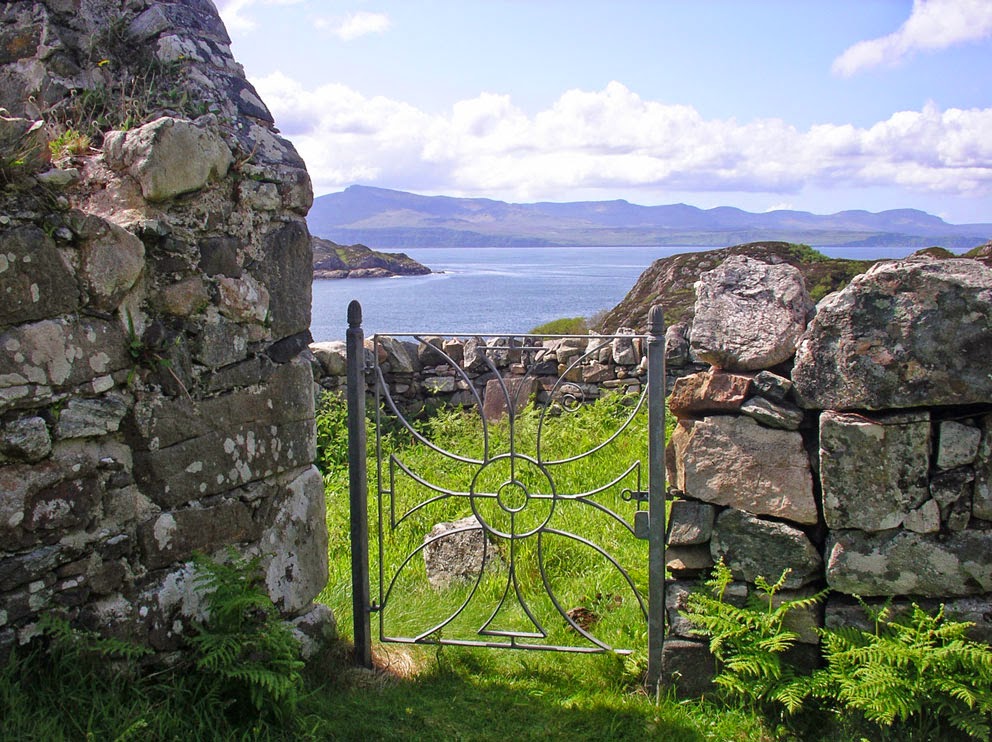There are some remarkable carved stones on the island of Eigg. Most are thought to have originated in Kildonnan, a monastery founded by St Donnan in the 7th century. The only building on the site today is a church that dates to the 16th century, but remnants of the original monastery have been uncovered under the turf between the shore and the church.
Mounted on a pedestal in a field next to the roofless church is an ornately carved shaft of a cross. The cross, of the Iona type, is thought to date to the late 14th century, and is carved from Loch Sween schist, so perhaps it was carved on the mainland near Kilmory Knap, and then shipped to Eigg.
 |
| The cross shaft at Kildonnan |
As you can see in the photo, at some point in the last 500 years the cross must have fallen, as the cross-head has broken off. Unfortunately it's gone missing; either lost or taken by thieves. Today you will find an unrelated cross-head propped up against the cross-pedestal. I read somewhere that it was intended as a replacement head, and is a copy of the top of Prior Colin's Cross on Oronsay.
 |
| Eigg cross shaft with the stand-in head on the ground |
The crucifixion scene on the face of the stand-in head has been heavily worn by the elements and is barely discernible. However, the beautiful carving on the reverse side is still in good shape.
 |
| Reverse side of the Eigg stand-in |
The cross slab also graces the cover of the 1927 edition of Kenneth Macleod's
The Road to the Isles. (Macleod was born on Eigg.)
There is not much information on the headless shaft. It's not mentioned in Romilly Allen's
Early Christian Monuments of Scotland, and the only thing TS Muir has to say of it in his
Ecclesiological Notes on the Islands of Scotland is: ...
within it (the chapel) is a slab covered with folaige. That description was from 1856, so it was at some point after that that the slab was erected on a pedestal outside the church. The next photo is a side-by-side comparison of the Oronsay cross and the replacement head. They do look similar. See this
RCAHMS page for more on Kildonnan, and be sure to see this
Eigg History Society page for a information on excavation work that has uncovered some of the old monastery, and includes a drawing of what it may have looked like.
 |
| Eigg stand-in (left) and the Oronsay Cross (right) |










































